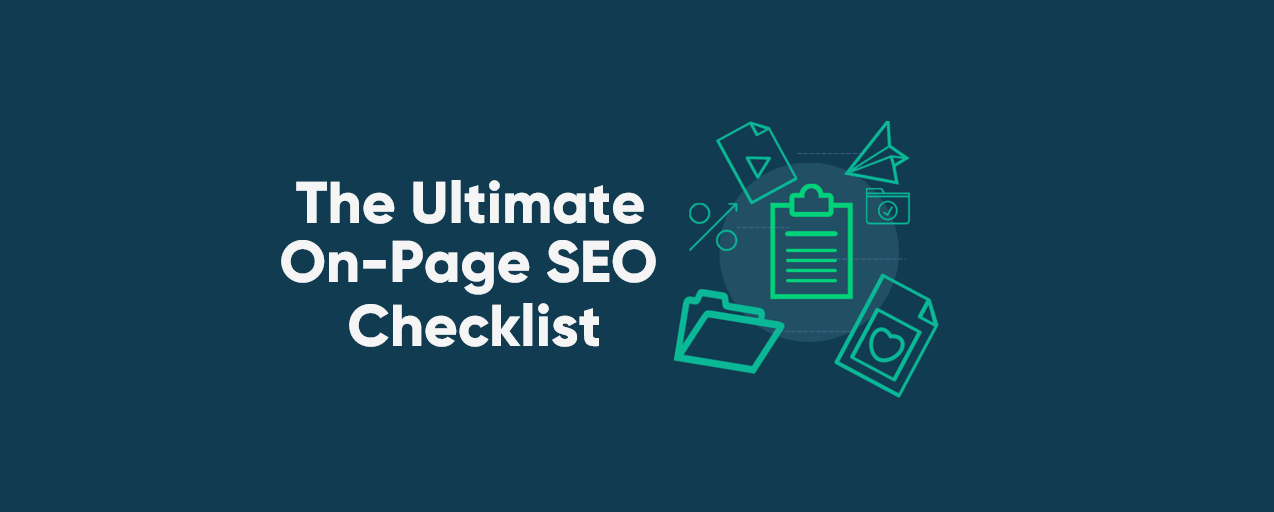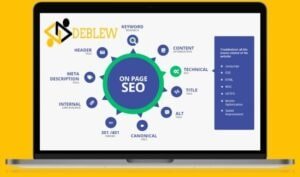The Ultimate On-Page SEO Checklist: Boost Your Website’s Search Rankings
In today’s digital landscape, on-page SEO is a crucial element for enhancing your website’s visibility in search engine results. Unlike off-page SEO, which deals with external factors affecting your site’s ranking, on-page SEO focuses on optimizing the elements within your website.
By mastering on-page optimization, you can improve your site’s relevance and authority, ultimately driving more traffic and conversions. This comprehensive checklist will guide you through essential on-page SEO practices to boost your website’s search rankings effectively.
Keyword Research
Finding Relevant Keywords:
Keyword research is the foundation of any successful SEO strategy. Start by identifying relevant keywords that align with your content and audience intent. Use tools like Google Keyword Planner, SEMrush, or Ahrefs to discover keywords that potential customers are searching for.
Importance of Long-Tail and LSI Keywords:
Long-tail keywords are typically less competitive and more targeted, leading to higher conversion rates. Additionally, Latent Semantic Indexing (LSI) keywords—terms related to your primary keyword—help search engines understand your content better.
Tools for Keyword Research:
- Google Keyword Planner: A free tool that provides keyword ideas and search volume data.
- SEMrush: A comprehensive tool offering keyword tracking, competitive analysis, and more.
- Ahrefs: Known for its extensive keyword database and analysis features.
Optimizing Title Tags
Crafting Compelling and Keyword-Rich Title Tags:
Your title tag is one of the first things users and search engines see. Create engaging titles that include your primary keyword while accurately reflecting the content.
Ideal Title Length and Structure:
Keep your title tags between 50-60 characters to ensure they display fully in search results. Aim for clarity and relevance.
Best Practices for Unique Titles on Every Page:
Each page should have a unique title tag to avoid internal competition and confusion for search engines.
Writing Effective Meta Descriptions
Importance of a Well-Optimized Meta Description:
A compelling meta description can significantly influence click-through rates (CTR). It provides a brief summary of your page’s content in search results.
How to Include Target Keywords Naturally:
Incorporate your primary keyword in the meta description while keeping it readable and engaging. This signals relevance to search engines and encourages users to click.
Guidelines on Length and Structure:
Keep meta descriptions between 150-160 characters to ensure they are fully displayed in search results. Aim for a clear call-to-action to entice users.
Using Header Tags (H1, H2, H3) Effectively
Importance of Using Header Tags for Content Structure:
Header tags help organize your content, making it easier for both users and search engines to understand the structure and main points of your page.
Best Practices for Using Primary and Secondary Keywords in Headers:
Use your primary keyword in the H1 tag, while incorporating related keywords in H2 and H3 tags. This creates a logical hierarchy and improves keyword relevance.
Avoiding Header Tag Over-Optimization:
Don’t overstuff keywords in your headers; maintain natural language that enhances readability.
URL Structure
Importance of Keyword-Friendly URLs:
A clean and descriptive URL can improve user experience and enhance search engine understanding of your content.
Tips for Short, Descriptive, and Clean URLs:
- Use hyphens to separate words.
- Keep URLs concise and relevant to the content.
- Avoid unnecessary parameters and symbols.
Avoiding Unnecessary Parameters and Symbols:
A simple URL structure is more user-friendly and easier for search engines to crawl.
Content Optimization
Creating High-Quality, Valuable Content:
Content is king in SEO. Focus on producing informative, engaging, and original content that meets user needs.
How to Naturally Include Keywords in the Content:
Distribute your primary and secondary keywords throughout the content in a natural manner. Aim for a keyword density of about 1-2%.
Avoiding Keyword Stuffing and Over-Optimization:
Prioritize readability and user experience over keyword frequency. Over-optimization can lead to penalties from search engines.
Internal Linking
Importance of Internal Linking for Site Structure:
Internal links help establish the architecture of your site, guiding users and search engines to important pages.
Best Practices for Linking to Related Content:
Link to relevant articles and pages within your website to keep users engaged and reduce bounce rates.
How Internal Links Boost SEO and User Experience:
Strategically placed internal links enhance navigation and allow search engines to crawl your site more effectively.
Image Optimization
Using Alt Text to Describe Images for Search Engines:
Alt text is crucial for image SEO, providing context to search engines and improving accessibility for visually impaired users.
Compressing Images for Faster Load Times:
Use image compression tools to reduce file sizes without sacrificing quality, improving page load speed.
Using Appropriate Image File Names:
Choose descriptive file names that include relevant keywords to further optimize images for search engines.
Mobile Responsiveness
Importance of Mobile-Friendly Design for SEO:
With the rise of mobile users, having a responsive design is essential. Search engines prioritize mobile-friendly sites in their rankings.
Ensuring the Website is Responsive Across All Devices:
Use responsive design techniques to ensure your site looks great and functions well on all screen sizes.
Tools to Test Mobile-Friendliness:
Utilize tools like Google’s Mobile-Friendly Test to check and improve your site’s mobile responsiveness.
Page Speed Optimization
Impact of Page Load Speed on Rankings:
Fast-loading pages lead to better user experience and higher rankings in search results.
Tools to Check and Improve Website Speed:
- Google PageSpeed Insights: Analyze your site’s speed and receive suggestions for improvement.
- GTmetrix: Offers detailed insights into your website’s performance.
Strategies to Improve Load Times:
- Compress images and leverage browser caching.
- Minimize CSS and JavaScript files to reduce loading time.
Outbound Links
Linking to Authoritative Sources:
Including outbound links to reputable sites enhances your content’s credibility and can improve SEO.
Benefits of Using Outbound Links for Credibility:
Outbound links signal to search engines that you are providing valuable information, improving trustworthiness.
Best Practices for Balancing Internal and External Links:
Maintain a healthy balance between internal and external links to optimize your site’s authority and usability.
Structured Data (Schema Markup)
How Schema Markup Helps Search Engines Understand Content:
Structured data provides additional context to search engines, helping them display rich snippets in search results.
Common Types of Structured Data:
- Reviews: Enhance product visibility with star ratings.
- Articles: Provide context about your content type.
- Products: Display pricing and availability directly in search results.
Tools for Implementing Structured Data:
Use Google’s Structured Data Testing Tool to validate your schema markup and ensure proper implementation.
Conclusion
In summary, mastering on-page SEO is essential for improving your website’s search engine rankings. By following this detailed checklist—covering keyword research, optimizing title tags and meta descriptions, using header tags effectively, and ensuring mobile responsiveness—you can enhance both user experience and search visibility.
Regularly update your content and practices to stay ahead in the ever-evolving world of SEO. Implement these strategies to boost your site’s performance and watch your rankings soar!







